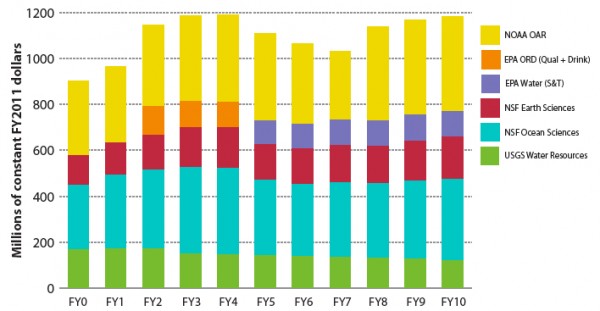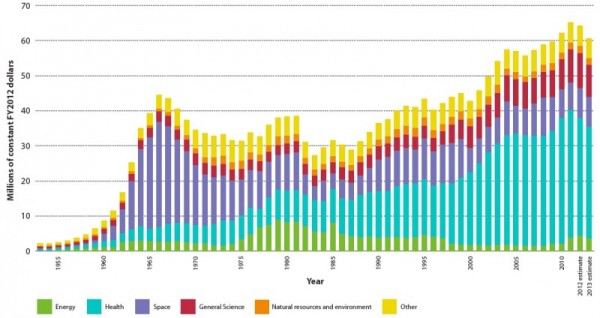Time for Another Giant Leap For Mankind
In May of 1961, President John F. Kennedy announced a bold priority for the United States. He memorably urged the nation to send a man to the Moon by 1970:
“No single space project in this period will be more impressive to mankind, or more important for the long-range exploration of space; and none will be so difficult or expensive to accomplish.”
Kennedy and his administration recognized that the United States risked losing the space race to the Soviets during the Cold War. With tremendous federal support from Congress, it took just eight years before Neil Armstrong left dusty footprints behind on the Moon.
There were other significant challenges he addressed as well that we don’t hear as much about. Just one month earlier, the president pressed the country to overcome another serious task:
“If we could ever competitively— at a cheap rate—get fresh water from salt water, that would be in the long-range interest of humanity and would really dwarf any other scientific accomplishment.”
Kennedy understood that improving desalination technologies would raise men and women from lives of poverty and improve human health globally. Unfortunately, that quote failed to make many history books.
Why should water be a great national priority? Even though the planet is covered in water, only 2.5% of it is fresh and two-thirds of that is frozen. This doesn’t leave much for the estimated 10.1 billion people on Earth by 2100. Water consumption continues to increase at a faster rate than population growth. Today over one billion people do not have access to clean drinking water, and the United Nations estimates that unsanitary water leads to more than 2 million deaths every year. Waterborne illnesses are associated with 80% of disease and mortality in developing nations, and sadly, the majority of the victims are children.
Since Kennedy’s 1961 call to arms, neither desalination nor the larger issue of the nation’s water infrastructure has received much public attention or regular directed federal support. Water R&D has not been a consistent priority, and investment has endured erratic boom and bust cycles.
During the 1960s and 1970s, the U.S. government cumulatively spent over $1 billion (in nominal dollars) on desalination R&D alone. The Water Resources Research Act of 1964 led to the creation of the Office of Water Research and Technology in the Department of Interior in 1974 to promote water resources management. It also helped to establish water research institutes at universities and colleges. Three years later, the Water Research and Conservation Act authorized $40 million for demon-stration-scale desalination plants. The following year, the Water Research and Development Act extended funding through 1980. But the Office of Water Research and Technology did not last. Just eight years after it opened, the Reagan administration abolished it, distributing authority over water programs among various agencies.
Congressional appropriations continue to be provided annually to fund water infrastructure, but it’s been 16 years since authorizing legislation was enacted to set drinking water policy. For wastewater, it has been a quarter century. Complicating matters further, because water programs are spread across a host of agencies and departments, it’s extremely difficult to track government R&D spending on water.
However, with the help of the National Academy of Sciences and the American Association for the Advancement of Science, we have been able to assemble a first-cut estimate for water R&D over time [in fiscal year (FY) 2011 dollars]. Although the details might be a little fuzzy, the overall picture is clear: Water R&D has been woefully neglected.
How can the nation expect to meet the looming water challenges when spending has not even been reliably tracked for the past 50 years? If it’s true that we cannot improve what we do not measure, then the fact that water R&D hasn’t been carefully tracked is a sign that we’re not taking it seriously. It’s no wonder that water treatment technologies have evolved so slowly, that water infrastructure leaks so abundantly, and that water quality is at risk from a variety of societal activities and policy actions. Despite decades of building the greatest innovation and R&D system the world has ever seen, progress in water innovations seems halting and stunted, especially when compared with the advances that occurred in parallel for information technology, energy, health care, or just about any other sector critical to society.
Just imagine what we would have accomplished by now had we devoted the same attention to looking for water on Earth as looking for water on the moon.
Today, even the youngest Americans can quote Neil Armstrong. We celebrate the space program as one giant leap for mankind. Now it’s time to take a second great leap by doing something even greater for humanity: investing in water research.
U.S. federal water-related R&D by agency, 1964-2010 (FY 2011 dollars)
This graph tracks water-related R&D spending at the U.S. Geological Survey, the National Science Foundation, the Environmental Protection Agency, and the National Oceanic and Atmosphere Administration. It does not include the relatively minor investments of several other agencies, such as the National Aeronautics and Space Administration’s spending on remote water sensing. Complicating matters, several agencies we examined have restructured budget-tracking methods over the years, making it difficult to make accurate comparisons across decades.
U.S. federal nondefense R&D spending by topic (FY 2012 dollars)
Federal R&D investment is a useful proxy for measuring a nation’s priorities. As this graph illustrates, from 1964 to 1967, space exploration received the lion’s share of funding by garnering over 60% of the total nondefense federal R&D budget. The space race was a top national priority, and that investment not only put a man on the moon but also stimulated progress in a number of technologies that are still producing economic benefits.
In the late 1970s and early 1980s, after two successive energy crises, energy was the top national priority. Energy received over 20% of the national nondefense R&D budget. Later in the 1980s, the United States invested in advanced weaponry (as part of an expansion of the defense R&D budget, not shown), followed by health care in the 1990s through early 2000s.
Throughout these decades, water was receiving so little attention that its spending was not tracked, making it difficult to provide firm estimates of total spending for many years. However, for those years during which spending was recorded, it is clear that the United States was paying far less attention to water than it was to defense, health care, energy, space exploration, or basic sciences.


